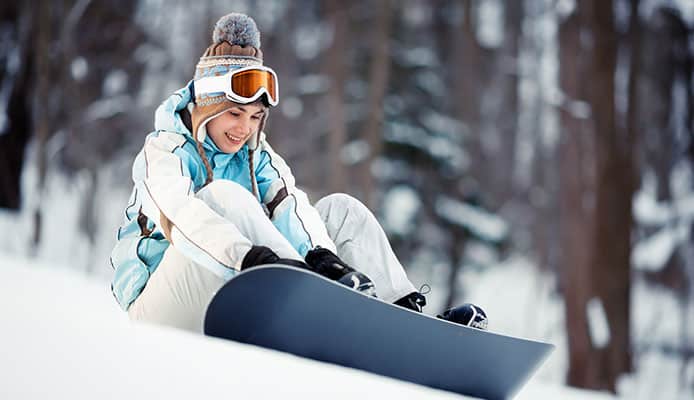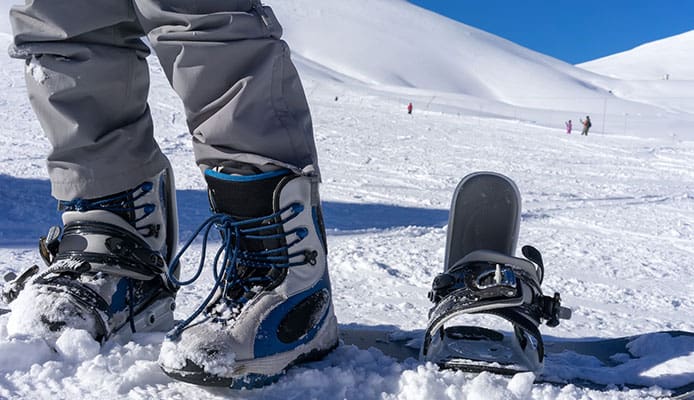
Few things compare to the thrill of skiing down steep slopes in the middle of winter. Every skier, whether a beginner, intermediate or advanced, knows the importance of good quality gear. It will keep you safe and will help you get the most out of your skiing experience. Then there are the 10 health benefits of skiing.
One other factor to consider is the DIN number. You can get this using a DIN calculator. The DIN calculator is a setting where a skier can add his weight, age, boot length, and type to get his or her DIN number.
This represents the amount of weight that the ski bindings can tolerate before they release. Getting the wrong DIN number can, therefore, cause the bindings to release and you to fall.
And such a fall can cause some serious injuries. In this DIN calculator guide, let’s find out how to calculate DIN settings for ski bindings.
Why you need a DIN setting
You might wonder how important it is to get your specific DIN setting. Such a benign task may prompt you to skip to calculate the DIN setting. Most people would rather be up on the slopes having a great time than focusing on how their height, weight, and experience affect the bindings.
However, it is an important step. It will prevent you from unnecessary falls and can be the difference between a great time on the slopes and a trip to the hospital with broken bones. Take a look at the skiing dangers and risks.
The average male beginner skier has a DIN setting of around 6. He will require between 194 and 271 NM of toque for his bindings to release.
On the other hand, the more experienced male skier will have a DIN setting of 8.5. He will require around 271 and 380 Nm of torque for his bindings to release.
Understanding the DIN settings
When you are out shopping for an awesome pair of beginner skis, you will often be required to do a test to determine your DIN settings.
Factors such as your height, weight, boot size as well as experience level will be considered. Then you will be given a letter and a number and this will be your DIN number. Simply put, the DIN will keep you safe when you are skiing on those slopes and prevent you from unnecessary tumbling and injuries.
The higher your number, the more pressure is required to release the ski bindings. This explains why more experienced skiers will have a higher DIN number as the more advanced skiers will go for the tough slopes and the steeper terrain and will exert a lot more force on the ski bindings.
But what does DIN stand for?
Deutsches Institut fur Normung. This is a German institute for standardization. Skiers, as well as the whole skiing industry, have adopted this method for determining the right setting for releasing ski bindings.
It also allows manufacturers to create just the right setting to keep you safe and on top of the skis. The great thing is that you do not need special education to figure out the DIN calculations.
That said, to prevent you from making mistakes that would cost you when riding the slopes, someone with experience with DIN settings should calculate them for you.
What you need for your DIN settings
To calculate DIN settings, you will need your weight, height, age, experience level, and the boot sole length.
When it comes to the weight and the height, in particular, you will be a signed a letter between A and O that will be matched against the release setting. Generally, the higher the letter the higher the DIN setting. However, we still need to factor in the other considerations.
The letter or code that you receive will be adjusted to the level of experience as well as the boot length and size. A useful skill to have as a skier is how to mount and adjust ski bindings.
Age
While age is not the most crucial factor, it is still an important consideration. Children under the age of 9 and people over the age of 60 are most likely to have more serious injuries and fractures and will, therefore, have a lower DIN number.
Note that it is important to know how to fall on skis to prevent the occurrence of injuries. Even the most experienced skiers will fall sometimes.
Weight

Another highly crucial consideration is weight. However, weights above 210 pounds are not too important. This is because weights above 210 pounds will have a code of between M and P and the specifics of those will depend mostly on the boot length as well as the experience of the skier.
Weight is one of the main factors when you are trying to determine the skier code. Granted there are exceptions to the rule but the skier code will almost certainly depend on the weight.
Keep in mind however that your DIN code will depend on the specific parameters. That said, a person’s weight can allow you to figure out their DIN setting and the specific code.
Height
Compared to age, height is a much more important consideration. Shorter people who are under 4’10” will have a code of between A to G. This often translates to a DIN setting of 0.75 to 3.50.
Tall people who are over 6’5” will often have a skier code of between M to P or a DIN setting of between 7.5 and 13. This is, of course, the highest setting.
You might also like: Perfect Kids Ski Helmets
Boot Length
Another factor to consider is the boot length. Generally, the larger the length of your ski boots the lower the DIN setting. This is because a longer boot will have a much larger boot sole surface area. The longer the sole of the ski boot, the less force it will need on the binding.
If you are a beginner, always ensure that you are wearing the best ski boots for beginners.
It is therefore important to visit a boot store to get the DIN setting. Note that a DIN chart will feature a certain height which will have a set boot length which is often assumptions.
The downside to this is that if you have smaller feet or longer feet than average, you will have a hard time figuring out your DIN setting.
Experience Level
When it comes to set your DIN setting, perhaps the most important consideration is your skiing experience.
This is because the more experienced you are the more force you are likely to put on your ski bindings. It is often the best idea to visit a ski shop to get the best advice on how to get the right DIN setting for you.
Keep in mind that having the most experience is not always about the duration of time that you have been skiing but also the type of terrain that you plan to ski on.
Always ensure that you are wearing the best ski goggles for better visibility and protection from UV radiation.
Globo Surf Overview
There are online DIN Calculators where you can add your weight, height, age, boot sole length, and the skier type. It will then quickly calculate your DIN setting.
More Snow Ski Gear Guides:
- How To Remove Ski Bindings
- Do You Really Need Ski Goggles
- Ski vs Snowboard Clothing Guide
- How To Layer For Skiing
- How To Choose Ski and Snowboard Goggles
- How To Size Ski Poles

